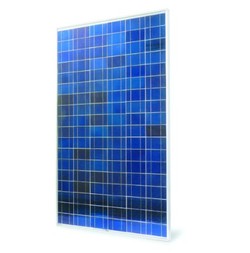Evergreen Solar was an American company that was founded in 1994.
Until filing for bankruptcy protection on August 15, 2011 due to increased competition from Chinese solar panels and slumping demand, the company was best known for its “string ribbon” solar technology.
Let’s take a look at this technology to get a handle on what Evergreen had to offer and whether “string ribbon” panels could still have a place in the hyper-competitive solar panel market.
String ribbon involves a manufacturing process where wires are pulled through molten silicon to form a multicrystalline ribbon of silicon crystals.
The “ribbon” is then cut to length and treated.
Why make solar panels this way? Well, it uses about half the silicon that traditional manufacturing methods use. That saves money.
The downside? String Ribbon solar cells are a little less efficient, converting less light to electricity than traditional solar cells. Also, they require a lot of heat to manufacturer so there are increased energy costs.
The other downside? Alternative solar technologies made a lot more sense back in 2005 when there was a silicon shortage and prices for traditional crystalline silicon solar panels were sky high. Since that time, however, solar panel prices have dropped significantly and there are more than enough solar panels to meet demand.
Alternative technologies like string ribbon could still find a place in the market, but it won’t be easy. No one is very interested in pouring a lot of money into developing new solar technologies that might never achieve profitability. It’s much easier to just stock up on the affordable and readily available polycrystalline and monocrystalline silicon solar panels that are collecting dust in warehouses.

So does string ribbon stand a chance? Sure it does. A company called Sovello is still manufacturing this type of panel and using 50% less silicon than traditional wafers. If the price of silicon went sky high again tomorrow there would be a line of customers beating a path to Sovello’s door.
Just in case string ribbon panels survive, take a look at some of the specs Evergreen solar panels achieved:
Note: If you want to know more about what these stats mean check out solar panel info (it will open in a new window so you can go back and forth).
Now, onto the stats…
- Rated Power at STC (Standard Test Conditions)This will be the “advertised” wattage of the panel you’re looking at (e.g. 180 watt or 205 watt).
- Rated Power Tolerance (%)
- ES-180 – +3.5/-2
- ES-190 – +2.5/-2
- ES-195 – +2.5/-0
- ES-A-200 – +2.5/-0
- ES-A-205 – +2.5/-0
- ES-A-210 – +2.5/-0
- Rated Power Per Sq. Ft. (Watts)
- ES-180 – 11.2
- ES-190 – 11.8
- ES-195 – 12.1
- ES-A-200 – 11.8
- ES-A-205 – 12.1
- ES-A-210 – 12.4
- Module Efficiency (%)
- ES-180 – 12.0
- ES-190 – 12.7
- ES-195 – 13.1
- ES-A-200 – 12.7
- ES-A-205 – 13.1
- ES-A-210 – 13.4
- Materials Warranty (Years)
- 5
- Power Warranty (Years)
- 10 years at 90%
- 25 years at 80%
- Cell Type
- Ribbon
- Maximum Power Temperature Coefficient (% per °C)
- ES-180 – -0.49
- ES-190 – -0.49
- ES-195 – -0.49
- ES-A-200 – -0.45
- ES-A-205 – -0.45
- ES-A-210 – -0.45
